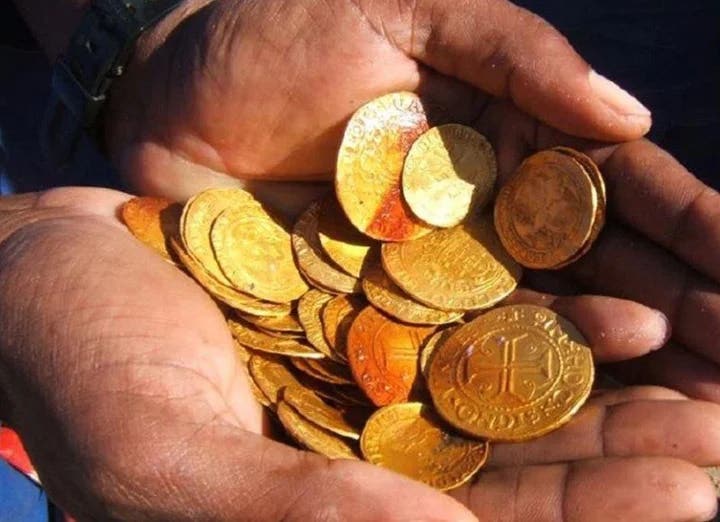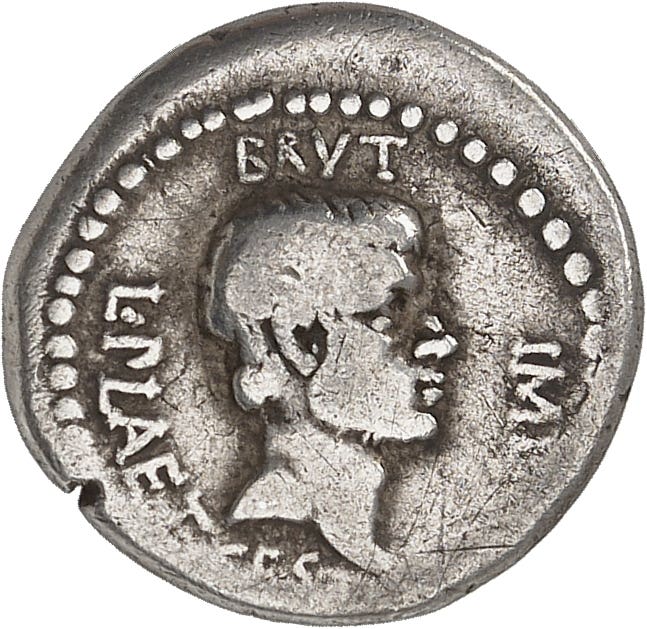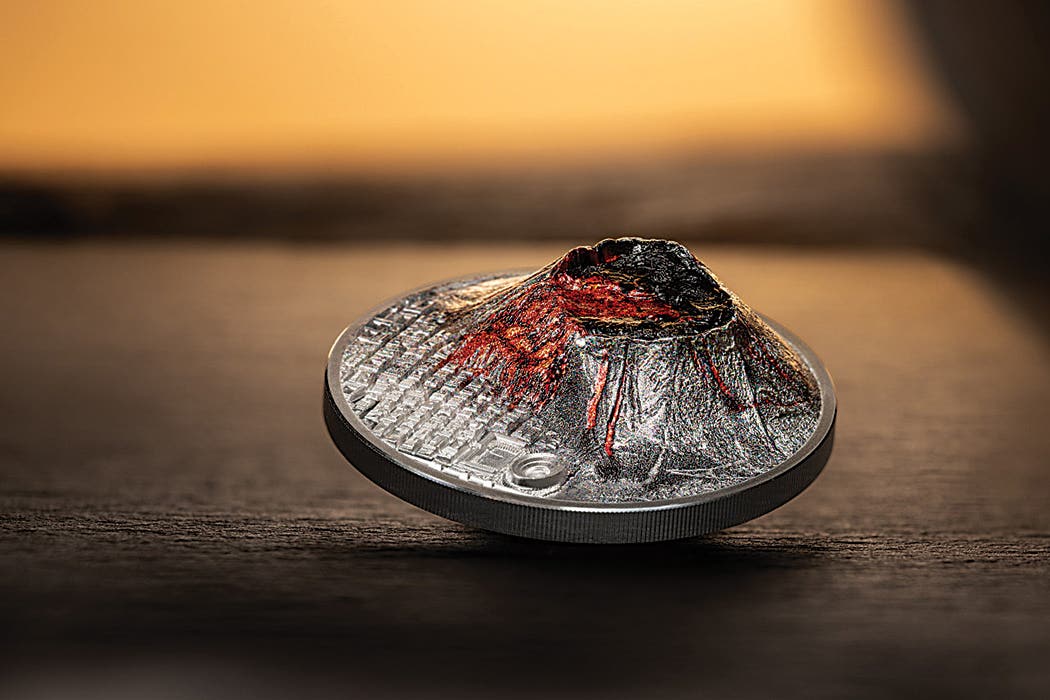Stack’s Features Rare Latin American Gold for NYINC Auction
The Oro del Nuevo Mundo Collection of Latin American gold 8 Escudos presents a stunning array of rare types and grade rarities. As of the time I wrote this article…
The Oro del Nuevo Mundo Collection of Latin American gold 8 Escudos presents a stunning array of rare types and grade rarities. As of the time I wrote this article 102 lots of the Oro del Nuevo Mundo Collection have been cataloged and are ready for online bidding. This is only a small portion of the Stack’s Bowers NYINC auction, but I bet the rest holds more treasures in many other areas.
Highlights from the Oro del Nuevo Mundo Collection are numerous. There are a pair of AU 8 Escudos of early Argentina, including the scarce 1830 date. An AU -55 Bolivia 8 Scudos of 1851, very difficult to find, particularly in grades above XF. From Chile we find a magnificent grade rarity in the MS-63+ 8 Escudos of 1832 for which Stack’s observes a break in the type creating a sub variety in the style of the mountains. We will catalog the 1824-1834 dates as KM84.2 to reflect this variety.
Colombian gold issues are always a delight to see on the market. There are several in the Oro del Nuevo Mundo Collection with the standout being am MS-64 Bogota 20 Pesos of 1874. Most of the dates of the basic KM142 varieties are moderately common in circulated grades. But don’t expect to see mint state graded examples. This coin is the finest ceritifed 20 Pesos known at present from the Bogota mint, of any type. Obviously this is a very rare coin and a rare opportunity for the successful bidder to elevate their collection.
The Central American Republic was a Confederation of emerging Central American countries which lasted from the dawn of Latin American independence in 1823 until 1839. Coins for the Confederation were struck at a few mints, but San Jose in Costa Rica produced the most. Because of its limited time frame and small array of coinage, the Central American Republic has always been an attractive collecting area. While it has many rare types and scarce to rare dates in those types, there are few CAR coins which can rival the 8 Escudos issues. Only six dates of this denomination exist for CAR with the first two dates; 1824 and 1825, being very rare and the remaining four considered rare in mint state grades.
The example offered in Stack’s Bowers NYINC Oro del Nuevo Mundo Collection is the most common date, but it is also the finest grade for the denomination and finest strike for any San Jose CAR coin of which I am aware. Again, this presents a great opportunity for any CAR or 8 Escudos collector.
Costa Rica has had a fascinating coinage history with many niche areas ripe for deeper numismatic study. They have lots of countermarked coinage, plenty of denomination revisions and many scare dates and rare types. One of the rarest coin types of 19thCentury Costa Rica has an example in the Stack’s Bowers Oro del Nuevo Mundo NYINC offering. The largest gold coin of the period, a 20 Pesos, nearly an ounce of gold, was struck in 1873 in very small numbers. As Stack’s Bowers lot description states, “A classic rarity within the Latin American series that is believed to have been presented to dignitaries and friends of Costa Rican President Tomas Guardia Gutierrez and is known in a quantity less than 15 today.”
Being a supposed presentation piece it is logical that the known examples all range from about XF-45 to MS-61. This particular coin is about the nicest example I have ever seen. Looking back through sales records I see that pieces come up for auction at a rate of one every three to six years, so expect to wait a while for another chance if you cannot acquire this excellent example.
The seven 8 Escudos from Ecuador form a strong centerpiece to the Oro del Nuevo Mundo Collection. One must be fairly patient to collect the coins of Ecuador, but when a group comes to the block you should be ready to act, as you might not get another chance for quite a while. In this case, all seven are worthy showpieces for any collection.
Three of the seven coin present exceptional opportunities for any collector. The 1845 QUITO M.V. is quite the rarity and this coin, grading AU-53, is much better than most you will encounter. I would not be shocked to see it go over its high end estimate of $50,000. The 1856 QUITO G.J. is a tough coin to find in any grade and was missing in a couple of the finest Ecuadoran collections I have encountered. The designation as a bust variety has been argued, but the rarity of this date cannot be denied.
If I had sufficient budget however, my Ecuador 8 Escudos of choice would be the 1848 QUITO G.J. in this sale. It is one of the rarest dates of the basic KM34 type, probably the best looking example I have ever seen and certainly the finest graded at MS-61. Very few have come up for sale over the years. Most strikes of the type have weakness, but this coin combines a very rare date with a superb strike. Hands down it is the most beautiful coin in the Oro del Nuevo Mundo collection to my eyes.
Colonial coinage of Guatemala is generally pretty desirable. The final 8 Escudos struck at the Nuevo Guatemala Mint to feature a Spanish ruler was the 1817 NG M, an example of which is in this sale. Of the three dates in this KM71 type this is the most accessible, but still it comes up very seldom and this is an overall appealing example.
The other Guatemala gold coins in the Oro del Nuevo Mundo Collections are Republican issues. They are all in a range from AU-55 to MS-61 which is well above average for the series. A lovely AU-55 16 Pesos of 1863 is a standout and will create some action. It is likely one of the coins discovered after the 1977 earthquake. That discovery made this date the most accessible. Prior to that little hoard being found we barely ever saw any one of the three dates in rare type come to market. An MS-61 20 Pesos of 1878 caps the Guatemalan selection as a choice rarity. While not the finest know, it is a prime example of a lovely coin design which will very likely exceed its high end estimate of $30,000.
The largest single country grouping in the Oro del Nuevo Mundo Collection are the 22 Mexican coins. They run the gambit of time, quality and rarity. Included are many colonial and republican types as well as two glorious Mexican Revolutionary pieces from Oaxaca, one being the massive and highly prized 1916 TM 60 Pesos. Both types and each variety of Empire of Iturbide 8 Scudos are present and they are dazzling examples. But the two standout Mexican gold coins for me are the War of Independence 1821 Ga FS 8 escudo of Guadalajara and the 1823 Mo JM “Hookneck” 8 Escudos.
All Hookneck coins are highlights any time they appear. Hookneck, the award winning research work by Clyde Hubbard and David O’Harrow, has drawn us all to these First Republic issues of Mexico. This in-depth study created a broader collecting base for these scarce coins and competition is now pretty fierce. This particular coin, the KM382 basic type, is the only gold coin of these first attempts at Republican coinage. There are two varies with the most easily recognizable feature being the curved or looped tail of the snake in the eagles beak. The example in the Oro del Nuevo Mundo Collection is a KM382.1, the first type with the curved snake tail of which we believe possibly 16 coins exist. Estimations of total surviving examples of the basic KM382 type number about a two dozen, meaning the KM382.2 has an estimated 8 survivors. The example in this NYINC sale is an exceptional strike and grades AU-58. While there are several coins which grade higher, I can think of very few that have the exceptional eye appeal of this example.
Guadalajara was the only mint to strike gold coins during the War of Independence. This distinction has brought them notoriety while their limited production and even more limited survival rate have made all of them rarities. In addition to offering this Oro del Nuevo Mundo Collection 1821 GA FS 8 Escudos, Stack’s Bowers NYINC auctions will also contain one of the exceptionally rare 1812 GS MR 4 Escudos of which only four are known. We’ll have more information about that coin later in the article.
The Guadalajara 1821 8 Escudos is a very well struck example grading AU-55. You can see the pattern by now. The Oro del Nuevo Mundo Collection centered on strike and eye appeal ahead of technical grade, which any collector should respect. Regarding the Guadalajara 8 Escudos of 1821, this is the more common of two varieties, the laureate bust. The second variety, the laureate draped bust is even more elusive. I have seen a number of the laureate bust KM161.1 types selling in European auctions at lower grades of late and prices have been a little lower than in the past. However, this example is at the upper end of survivors with its AU-55 grade and great looks. There should be hearty competition for this coin as it crosses the block.
Peru represents the next largest area of the Oro del Nuevo Mundo Collection, with twenty large gold coins. More than half of this group are colonial 8 Escudos, each with superior qualities but without any great rarities. Most of the rest are Republic types, also in impressive condition, but not rare. In the middle of these two groups however, are two 8 Escudos of the State of South Peru and the Republic of South Peru.
These two coins feature similar designs, but offer different legends illustrating a change in governmental organization. From 1821 to 1879 Peru endured a chaotic series of events involving Bolivia, Chile and Spain with possession, unification, confederation and intervention which eventually ushered the country into an age of independence, scarred by unsuccessful military campaigns and foreign economic domination as it was. Peru’s independence was as one of the more traumatic births in Latin American history, almost as destructive as the War of the Triple Alliance pitting Argentine, Brazil and Uruguay against Paraguay between 1864 and 1876.
Due to these political changes, the South Peru 8 Escudos were struck in two types in 1837, with Estado Sud Peruano and Republic Sud Peruano as their legends. The State issue type, KM167, is a single date type of 1837 CUZCO BA, very rare in high grade. The one offered in the Stack’s Bowers NYINC sale is graded MS-63. The Republic issue KM171 is a two date type, 1837 CUZCO BA and 1838 CUZCO MS, scarce in high grade. This auction offers an 1838 CUZCO MS in MS-63 also.
Each of these coins is much scarcer than the North Peru 8 Escudos KM183 struck from 1862 and 1863. The South Peru types also present what many might consider a more engaging design with its radiant sun-face arms and quaint reverse landmark scene. All that aside, it is unusual to find both the State and Republic 8 Escudos of South Peru together at auction, so this presents a good opportunity if one has the budget. However, with both coins grading well above the norm and displaying beautiful surfaces with great eye appeal, I’d expect competition to be tough and hammer prices to be near the top end estimate.
In speaking with Christine Karstedt, Executive Vice President at Stack’s Bowers Galleries, she reminded me that the Oro del Nuevo Mundo Collection is only a small part of the coins that will be available in their NYINC auction.
I had noticed a few several choice pieces in the Stack’s Bowers color ads in the last two issues of World Coins news and went to their website to discover more. I can tell you that the October WCN ad revealed two coins which I know to be exceptionally rare.
First and foremost is a Mexico War of Independence Guadalajara 4 escudos 1812 GA MR. Up until about five years ago I had never even seen this type. To the best of my knowledge there are only four known examples in existence. The only one sold publicly that I could track brought over $110,000. The piece coming up in Stack’s Bowers NYINC sale looks to be the better of these two examples and will present an opportunity that is not to be missed. Most all Guadalajara Royalist coinage from the War of Independence is highly sought and quite expensive. The silver coins, though much more obtainable are also quite the find in higher grades. The escudo types are the only gold coins of the War and as such are always in great demand.
The second coin that turned my head is a Danish West Indies countermarked U.S. 50 cent coin. These host coins were specifically ordered from the U.S. Mint at the time, specifically to be countermarked for circulation on the islands. The Mint supplied Seated Liberty 50 cent pieces dated 1848, 1849 and 1850 for the order. These coins were countermarked in 1850 and circulated freely.
Though a myriad of spurious countermarked silver pieces exist, only these three host dates of the Seated Liberty 50 cent type and some 1849 25 cent host coins are legitimate Danish West Indies issues. Everything else you may come across in the way of host coins for this Crowned FR VII are counterfeits. As for the countermark itself, the official one has nice even arches in the crown and a very distinct cross at top of crown.
The 50 cent example in the Stack’s Bowers NYINC fits all the criteria. If you collect Danish West Indies, do not let this one get away. It is one of perhaps 4 or 5 known coins for the 1848 host date. All in all there are about 25 legitimate examples of these 25 and 50 cent countermarked coins and some of those are in museums.








